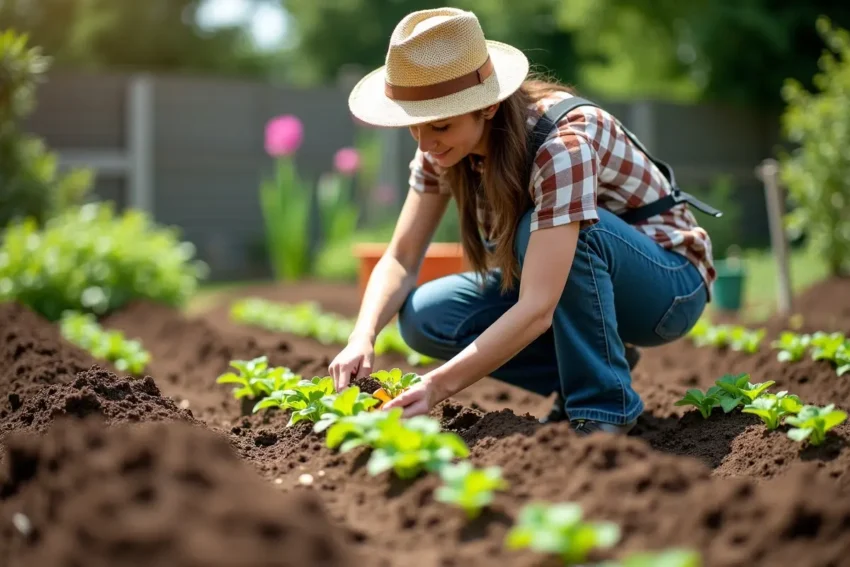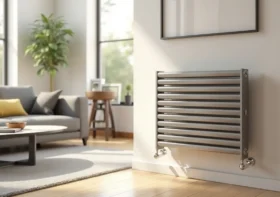Starting a Home Garden: What Actually Matters for Success

Home gardens fail for predictable reasons. Someone gets excited about growing food, buys plants or seeds, puts them in the ground or containers, and then watches them struggle or die despite good intentions. The disappointment leads to abandoned gardens and the conclusion that some people just aren’t good at growing things. But the problem usually isn’t a lack of gardening talent—it’s missing one or more fundamental requirements that plants need to thrive.
Understanding what actually matters separates successful gardens from frustrating failures. The basics aren’t complicated, but they’re not negotiable either. Plants need certain conditions to grow well, and providing those conditions matters more than fancy techniques, expensive products, or elaborate setups. Getting the fundamentals right means gardens thrive with relatively little fuss. Missing even one fundamental creates problems that no amount of attention can overcome.
The good news is that most people can provide what gardens need once they understand what those needs actually are. The challenge is figuring out which factors are truly essential versus which are just nice extras that marketing wants people to believe are necessary.
Contents
Sunlight Determines What’s Possible
Light availability is probably the single most important factor and the one that causes the most mismatched expectations. Plants have minimum light requirements that can’t be negotiated. A vegetable that needs six hours of direct sun won’t thrive with four hours no matter what else gets done right. Trying to grow tomatoes in shade is just setting up for disappointment.
Before choosing what to grow, honest assessment of available light is essential. How many hours of direct sun does the space get? Is it morning sun or afternoon sun? Does nearby shade change throughout the season as trees leaf out or the sun angle shifts? These questions determine what will actually grow successfully in that location.
Full sun vegetables—tomatoes, peppers, squash, cucumbers, most fruiting plants—need six to eight hours of direct sunlight minimum. Less than that and they’ll survive but produce poorly. Leafy greens and herbs can handle partial shade with four to six hours of sun. True shade vegetables are limited to a few options that tolerate low light conditions.
The mistake people make is planting what they want to grow rather than what their light conditions support. Someone with a shady balcony who really wants tomatoes will be disappointed. The same person growing lettuce, spinach, and shade-tolerant herbs in that space could have great success. Working with available light rather than fighting it makes the difference.
Soil Quality Can’t Be Faked
For traditional ground gardens, soil matters enormously. Plants grown in poor soil struggle no matter how much water and fertilizer they get. Good soil provides physical support, water retention, drainage, and nutrients all at once. Poor soil fails at one or more of these functions, creating stressed plants.
Clay soil that stays waterlogged drowns roots. Sandy soil that drains too fast can’t hold water or nutrients. Compacted soil prevents root growth. Contaminated soil can harm plants or make produce unsafe to eat. Assessing existing soil before planting prevents these problems.
Soil improvement takes time and materials but pays off in every subsequent growing season. Adding organic matter—compost, aged manure, leaf mold—improves almost any soil type. Clay becomes better draining. Sand gains water retention. Nutrients become available. Soil structure improves. This isn’t optional for most gardens—it’s the foundation everything else builds on.
For people with terrible soil or no ground access, container growing or alternative systems sidestep soil issues entirely. Quality potting mix in containers provides good growing medium without soil amendment work. Those exploring options might find that the Best Garden System for their situation eliminates soil concerns altogether through hydroponic growing that doesn’t use soil at all.
Water Access and Management
Plants need consistent water, which means gardens need reliable water access and someone willing to provide it. Sounds obvious, but water management trips up many gardeners. Either plants don’t get enough water and stress, or they get too much and develop root problems. Finding the balance takes attention.
Location matters for water access. A garden that requires dragging hoses long distances or carrying watering cans up stairs is less likely to get watered consistently than one near a water source. Convenience affects maintenance, which affects plant health. Thinking about water logistics before establishing a garden prevents future problems.
Different plants need different amounts of water. Established trees survive drought. Container tomatoes might need daily watering in summer. Seedlings need constant moisture. Matching plant water needs to available time and water access prevents stress—for both plants and gardeners.
Mulching helps tremendously by reducing evaporation and keeping soil moisture more consistent. Drip irrigation or soaker hoses reduce effort while improving water efficiency. These investments pay off in reduced time and water use.
Plant Selection Matters More Than Expected
Choosing appropriate plants for conditions and experience level affects outcomes more than people realize. A beginner growing finicky plants with specific requirements will struggle. The same person growing forgiving, easy plants will likely succeed.
Some plants are genuinely easier than others. Herbs like basil, mint, and parsley tolerate neglect and grow vigorously. Tomatoes produce well with basic care. Lettuce grows fast and forgivingly. These aren’t the only options, but starting with plants known for easy growth builds confidence and skills.
The trendy or unusual vegetable that requires precise conditions and constant attention makes a poor first choice. Someone struggling to keep basic plants alive doesn’t need the added challenge of difficult varieties. Build skills with easier plants, then try more challenging ones.
Local adaptation matters too. Plants suited to the local climate and growing season work better than those bred for different conditions. Checking what grows well regionally rather than just ordering what sounds interesting prevents mismatches between plant needs and what the environment provides.
Timing and Season
Planting at the right time for the local climate matters more than many beginners realize. Tomatoes planted too early in cold soil sit and sulk. Cool season crops planted in summer bolt immediately. Understanding local growing seasons and frost dates prevents these timing mistakes.
Cool season vegetables—lettuce, peas, broccoli, spinach—grow best in spring and fall when temperatures are moderate. Heat makes them bitter or causes them to go to seed. Warm season crops—tomatoes, peppers, squash, beans—need warm soil and air to grow well. Planting them in cold conditions stunts growth.
Seed packets and plant tags provide timing guidance, but local knowledge matters more. What works in one region might be completely wrong for another. Finding local planting guides or talking to successful gardeners in the area provides better timing information than generic national advice.
Starting Size and Scope
Beginning with too large or complex a garden sets up for overwhelm and abandonment. A small garden that gets maintained consistently produces far more than an ambitious garden that gets neglected. Starting small allows learning without massive time commitment or expense.
A few containers of herbs, a small raised bed, or even just a couple of tomato plants provides real growing experience without overwhelming someone new to gardening. Success with a small garden builds confidence and skills that support expanding later. Jumping straight to a huge garden usually ends with weeds, frustration, and giving up.
The same applies to growing methods. Starting with simple approaches—containers, basic raised beds—makes more sense than immediately building complex systems. Master the fundamentals with straightforward methods, then explore more advanced approaches if desired.
What Success Actually Requires
Successful gardens need adequate sun for chosen plants, good growing medium, consistent water, appropriate plant selection, correct timing, and realistic scope. These aren’t the only factors that matter, but they’re the ones that can’t be faked or worked around. Get these right and gardens thrive with reasonable care. Miss even one and problems develop that constant attention can’t solve.
The encouraging part is that most people can meet these requirements once they understand them. The discouraging part is that many gardens fail simply because someone didn’t realize a fundamental requirement wasn’t being met. A garden failing from insufficient sun won’t be fixed by more fertilizer. Plants dying in poor soil won’t recover with extra watering.
Starting a home garden successfully means honest assessment of what’s available—sun, soil, water, time—and then choosing plants and methods that match those realities rather than fighting them. Work with conditions rather than against them, start at manageable scale, and focus on fundamentals before worrying about optimization. This approach produces far better results than elaborate techniques applied to gardens that lack basic requirements.



